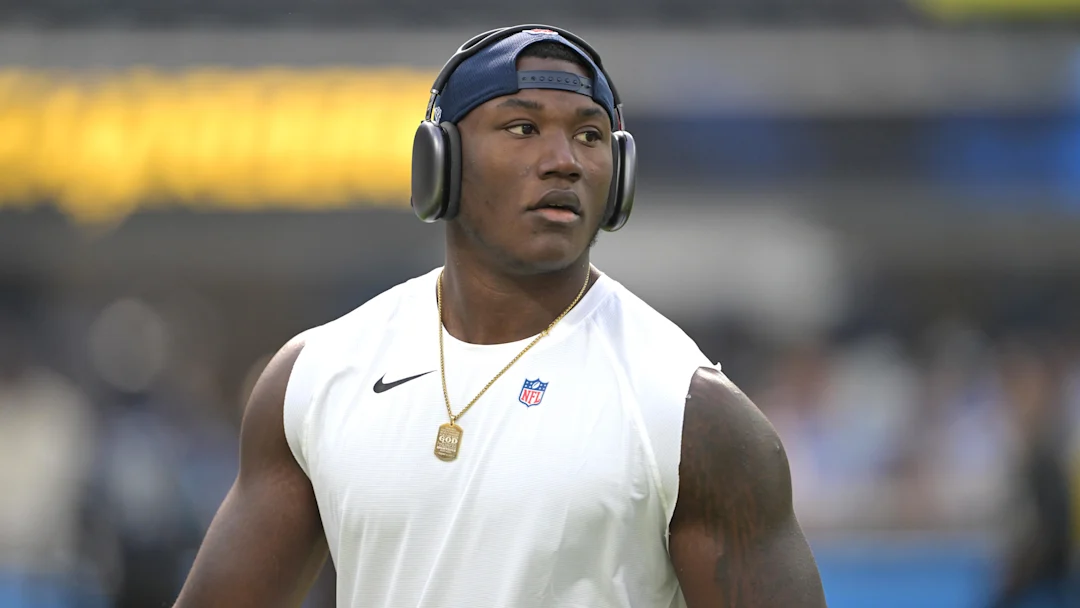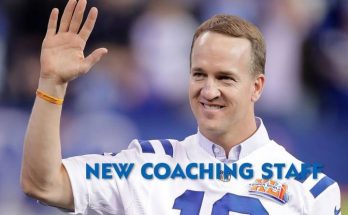As the 2025 NFL season approaches, expectations are once again sky-high in Dallas. The Cowboys, a franchise steeped in tradition and championship aspirations, find themselves at a pivotal crossroads. After an offseason marked by change—new coaching strategies, defensive personnel shifts, and a recommitment to toughness—the message from within the locker room is loud and clear: this year’s Dallas defense will stop the run.
That declaration isn’t coming from a coach or a faceless analyst—it’s straight from the mouth of one of the team’s projected defensive starters. A vocal leader and tone-setter in the locker room, linebacker Damone Clark made headlines this week when he boldly stated, “Teams will not run on us this year. Not with what we’re building.”
The confident statement struck a chord not just in Dallas, but across the league, and signaled a potential turning point for a defense that, in recent seasons, has drawn criticism for its inconsistency against the ground game. Let’s dive deep into the context behind Clark’s words, what’s changed in Dallas, and whether this new defensive mindset will deliver results in 2025.
The Cowboys’ Run Defense in Recent Seasons: A Weak Link?
For all the flash and excitement surrounding Dallas’s high-powered offense and aggressive pass-rush, the team’s inability to consistently stop the run has proven costly—especially in postseason matchups.
In 2022 and 2023, the Cowboys ranked in the bottom third of the NFL in rushing yards allowed per game, often surrendering big plays in crucial situations. Missed tackles, poor gap discipline, and a lack of physicality in the interior front were major culprits. While the 2024 defense improved statistically, ranking 14th in rushing yards allowed (112.3 YPG), it still showed vulnerabilities, particularly in a humbling playoff loss where the opposition ran the ball at will in the second half to drain the clock and secure a win.
“We didn’t impose our will. That’s what stings,” admitted a veteran defensive lineman after the season ended.
Damone Clark: The Mouthpiece of a Defensive Revival
Now entering his third season, linebacker Damone Clark has emerged as a key figure in the Cowboys’ defense. Drafted in 2022 out of LSU, Clark’s career started with adversity—spinal fusion surgery delayed his debut. But once he hit the field, his speed, sideline-to-sideline range, and instinctive play made him an immediate contributor.
In 2024, Clark recorded 104 tackles, 7 tackles for loss, 2 sacks, and a forced fumble. His leadership qualities began to shine in a linebacker corps that was in flux due to injuries and scheme adjustments. Now projected to be the primary signal-caller for the defense, Clark has embraced a vocal role in training camp.
“This is personal,” Clark told reporters during OTAs. “We’ve been called soft. Teams think they can bully us in the run game. That’s over. Not with this group.”
He credited the influence of new defensive coordinator Mike Zimmer—yes, the former Vikings head coach, who returned to Dallas in 2025—to reignite physicality and discipline.
Mike Zimmer’s Influence: Bringing Back an Edge
Mike Zimmer’s return to the Cowboys, where he previously served as defensive coordinator from 2000 to 2006, marks a philosophical shift. Known for his no-nonsense demeanor and aggressive defensive schemes, Zimmer wasted no time during minicamp to address the team’s struggles against the run.
“You don’t win in December or January if you can’t stop the run. It’s that simple,” Zimmer said during his introductory press conference. “We’re going back to basics—pad level, hand placement, tackling, controlling the line of scrimmage.”
Zimmer has installed more 4-3 under looks and adjusted gap responsibilities to get the defensive linemen attacking rather than reacting. He also advocated for increased reps for bigger-bodied players in the rotation, pushing for a more rugged front.
Personnel Upgrades: Building a Wall
The Cowboys’ front office took the defensive struggles to heart this offseason and added new faces to shore up the run defense.
Key additions include:
- Kendal Vickers, a run-stuffing defensive tackle, signed in free agency after a strong season in Las Vegas.
- Jordan Whittington, a powerful rookie linebacker out of Texas, was taken in the third round of the NFL Draft and has already impressed with his tackling ability and football IQ.
- Chauncey Golston, now entering his fourth year, is expected to have a bigger role as a hybrid DE/DT with strong edge-setting skills.
Combine those additions with returning veterans like Osa Odighizuwa, DeMarcus Lawrence, and a fully healthy Leighton Vander Esch, and the defensive front seven appears deeper and more balanced than in years past.
A Scheme Fit: The Right Pieces in the Right Roles
One of the criticisms of former defensive coordinator Dan Quinn’s approach was the over-reliance on light boxes and hybrid defenders that, while effective in coverage and speed-based situations, left the unit vulnerable to power runs.
Zimmer’s preference for true linebackers and physical defensive ends may benefit players like Clark, who thrive when protected by downhill linemen.
Additionally, second-year defensive tackle Mazi Smith—a 2023 first-round pick—has reportedly slimmed down and refined his technique in the offseason. Smith was often overmatched last year but is now expected to anchor the interior, occupying multiple blockers and freeing up the linebackers behind him.
A Culture Shift: Accountability and Identity
Beyond Xs and Os, Clark and others have emphasized that this year’s defense is taking accountability to a new level.
“There’s a different energy now,” said DeMarcus Lawrence. “We’re not just trying to get sacks and picks. We’re trying to break the other team’s spirit. That starts with stopping the run.”
Players have formed small-unit accountability groups, where every missed tackle or mental error is addressed in film review sessions led by the players themselves. Coaches have also introduced “run-fit periods” in practice, where the entire focus is on stuffing the run—no trickery, no passes, just gritty, old-school football.
Early Results: OTAs Show Promise
While no one wins games in May or June, early OTA practices have shown encouraging signs for the Cowboys’ revamped front.
Observers noted that during goal-line and short-yardage sessions, the defense repeatedly clogged running lanes, forced stops, and tackled with purpose. Rookie linebacker Jordan Whittington blew up a stretch run by navigating through traffic and making a solo stop in the backfield—a play that drew cheers from teammates and coaches alike.
Zimmer’s voice could be heard throughout, praising effort and intensity while demanding perfection on assignments.
Clark’s Bold Promise: A Motivational Tool or Risky Bet?
By going public with his promise to shut down the run, Damone Clark has added fuel to the fire and placed a target squarely on Dallas’ back.
Some critics have questioned the wisdom of such a statement, especially considering the team’s recent inconsistencies. NFL running backs and offensive lines may view his words as bulletin-board material.
But Clark appears undeterred.
“Pressure is what we live for,” he said. “If you’re scared to make a bold statement, you shouldn’t wear the Star.”
Looking Ahead: Can the Cowboys Deliver?
The real test will come when the season kicks off in September. The Cowboys face several top rushing offenses in the first half of the year, including the Philadelphia Eagles with dual-threat Jalen Hurts, the Green Bay Packers’ AJ Dillon, and the New York Giants, who added a revamped offensive line to support a power-run game.



